Implantation symptoms can be subtle and hard to notice, and when you’re trying to conceive, it can be hard not to look at every new sensation as a sign of pregnancy. Here’s the lowdown on implantation with the help of a Flo expert.
-
Tracking cycle
-
Getting pregnant
-
Pregnancy
-
Help Center
-
Flo for Partners
-
Anonymous Mode
-
Flo app reviews
-
Flo Premium New
-
Secret Chats New
-
Symptom Checker New
-
Your cycle
-
Health 360°
-
Getting pregnant
-
Pregnancy
-
Being a mom
-
LGBTQ+
-
Quizzes
-
Ovulation calculator
-
hCG calculator
-
Pregnancy test calculator
-
Menstrual cycle calculator
-
Period calculator
-
Implantation calculator
-
Pregnancy weeks to months calculator
-
Pregnancy due date calculator
-
IVF and FET due date calculator
-
Due date calculator by ultrasound
-
Medical Affairs
-
Science & Research
-
Pass It On Project New
-
Privacy Portal
-
Press Center
-
Flo Accuracy
-
Careers
-
Contact Us
Implantation symptoms: What are the possible signs?
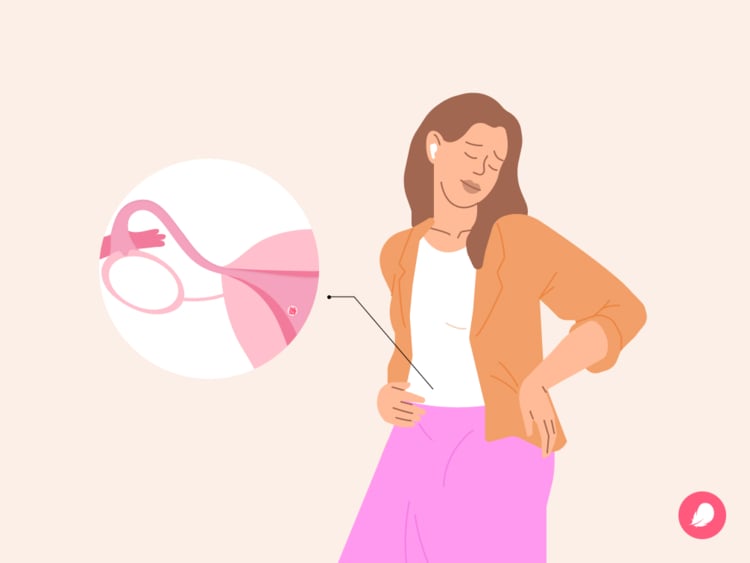

Every piece of content at Flo Health adheres to the highest editorial standards for language, style, and medical accuracy. To learn what we do to deliver the best health and lifestyle insights to you, check out our content review principles.
When you’re actively trying to get pregnant, the two-week wait between ovulation and the start of your period can be an intensely frustrating time. It can be tempting to scrutinize every new sensation or twinge and wonder if it’s a sign of pregnancy.
Understanding the ins and outs of what’s happening when you get pregnant might ease some of your frustrations. A good place to start is implantation. This is the moment you officially become pregnant. But can you feel it happen?
Let’s dig a little deeper. What are the signs and symptoms of implantation? And when is the best time to do a pregnancy test? Here, a Flo expert reveals all.
Key takeaways
- Implantation is the term used to describe when your fertilized egg attaches to your uterine lining. This is the point in your conception journey when you’re officially classed as being pregnant, and it can happen around six to 10 days after conception.
- Your fertilized egg will become what’s known as an embryo at this point in your pregnancy, and it’s absolutely microscopic. So, it’s unlikely you would feel implantation.
- Cramping, bloating, and breast tenderness are all considered to be signs of early pregnancy — but they could also indicate that your period is coming. And since implantation often coincides with the days just before your period starts, it can be tough to distinguish between the two.
- Around a quarter of people will notice spotting or light bleeding after implantation. This might look like brown or pink discharge.
- It can feel really frustrating, but the best way to confirm if implantation has happened is to wait until the first day of a late period and take a pregnancy test.
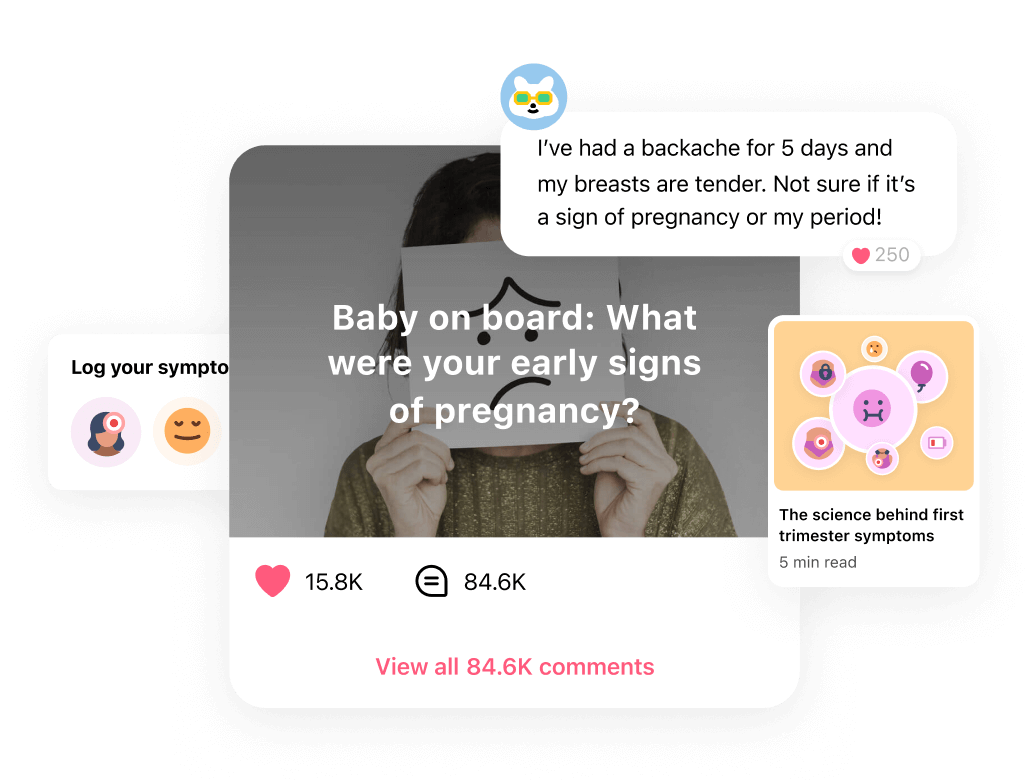
 Over
7.8M
ratings averaging
4.8/5
*
Over
7.8M
ratings averaging
4.8/5
*
Understand your body’s signals with the Flo app
- Chat with others who are trying to get pregnant.
- Get trusted information on signs of pregnancy from 100+ medical experts.
- Log your symptoms and learn what they could be trying to tell you.
 Over
7.8M
ratings averaging
4.8/5
*
Over
7.8M
ratings averaging
4.8/5
*

Trying to conceive?
The Flo app can help you through the two-week wait.

 Over
7.8M
ratings averaging
4.8/5
*
Over
7.8M
ratings averaging
4.8/5
*
Understand your body’s signals with the Flo app
- Chat with others who are trying to get pregnant.
- Get trusted information on signs of pregnancy from 100+ medical experts.
- Log your symptoms and learn what they could be trying to tell you.
Take a quiz
Find out what you can do with our Health Assistant
How noticeable are implantation symptoms?
Since we know that implantation is the moment that your fertilized egg attaches to the lining of your uterus — marking the official start of pregnancy — you might be curious if you’ll feel any different after this. It’s a pretty big milestone, after all.
You’ll likely have heard about pregnancy nausea and bloating, but it’s still far too early to notice any of these symptoms. Your fertilized egg is so tiny at this point — somewhere between 70 and 200 cells or less than 1 mm (or 0.03 inches) — so the likelihood that you would feel it implant is very, very slim.
Similarly, the symptoms you might experience, such as cramping and spotting, are not “unique or specific to implantation,” says Dr. Jenna Beckham, an obstetrician, gynecologist, and complex family planning specialist at WakeMed Health and Hospitals, Planned Parenthood South Atlantic in North Carolina, US. Often, the moment of implantation can coincide with the days just before your period starts. So, are you noticing the first signs of pregnancy or premenstrual symptoms? It can be hard to tell.
Even if you aren’t sure if you’ve felt noticeable symptoms linked to implantation, it can be handy to have a timeline of when it might happen in your cycle.
Your cycle is split into two parts: your follicular phase, which starts on the first day of a new period, and your luteal phase. In between these two phases is ovulation — the big moment when one of your ovaries releases an egg. This is a crucial time if you’re trying to get pregnant, as this egg may meet and be fertilized by a sperm.
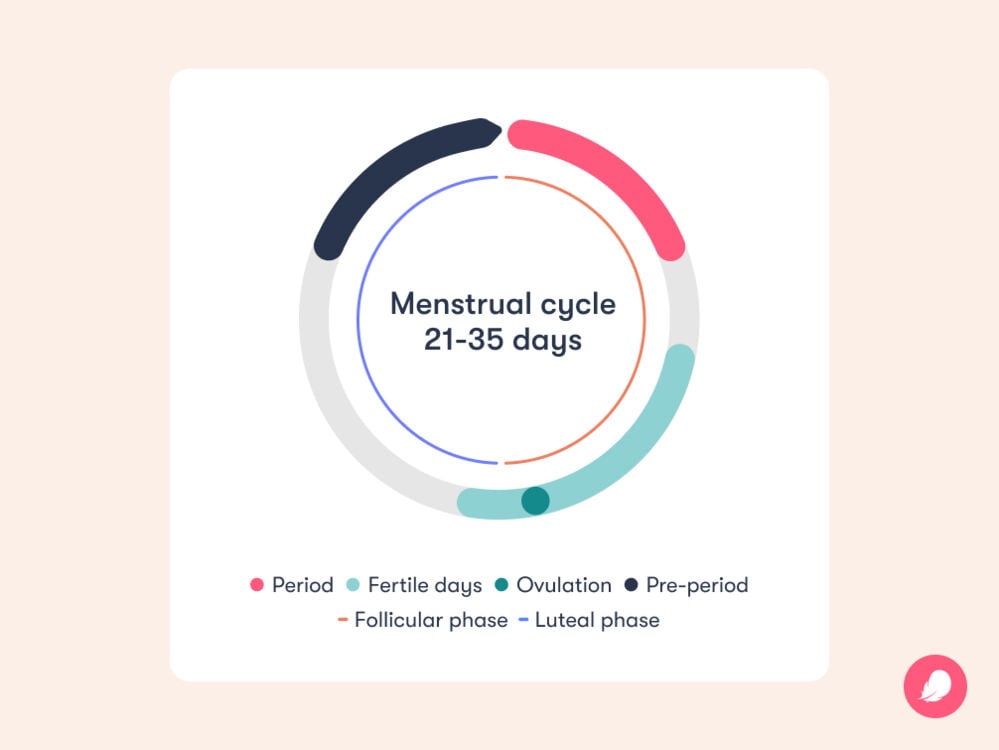
The total average cycle (that’s your follicular phase and luteal phase combined) is around 28 days. However, if yours is between 21 to 35 days, then it’s still considered to be typical. When you’re trying to figure out when implantation might have happened for you, it’s crucial to remember that it must have happened after you ovulated. You can determine when you ovulated using a cycle-tracking app like Flo or an ovulation calculator.
Once you’ve ovulated and your egg has been fertilized by a sperm, it moves down one of your fallopian tubes to your uterus. There, it will implant into your uterine lining and start to grow and develop. This process can take six to 10 days, meaning that implantation doesn’t happen for six to 10 days after conception. The implanted embryo will then start to release a hormone called human chorionic gonadotropin (hCG), which helps to support your pregnancy. Interestingly, this is the hormone pregnancy tests detect.
You can use an implantation calculator to estimate when this might have happened for you.
Possible implantation symptoms
Even though implantation timing is difficult to pinpoint, some people say that they know as soon as they are pregnant, particularly if they’ve been tracking ovulation. And it’s true that implantation does sometimes come with early signs that it has taken place.
Implantation bleeding
Bleeding between your periods, also known as spotting, can be alarming. However, this might be implantation bleeding. This can happen when your fertilized egg attaches to your uterine lining, disrupting some of the blood vessels as it embeds.
Implantation bleeding is completely normal, so try not to worry if you notice it. Around 1 in 4 people say they notice some spotting in early pregnancy, and it can be easy to distinguish from a period because it’s usually much lighter bleeding — usually only a few spots — and the blood is often brown or pink as it mixes with your discharge.
It can be tough to know if you’ve experienced implantation bleeding because not everyone will experience this symptom, and this doesn’t mean implantation didn’t happen. Spotting can also be caused by lots of other things and isn’t exclusively an indication of implantation. If you’re ever worried about bleeding between your periods, then don’t hesitate to reach out to your doctor.
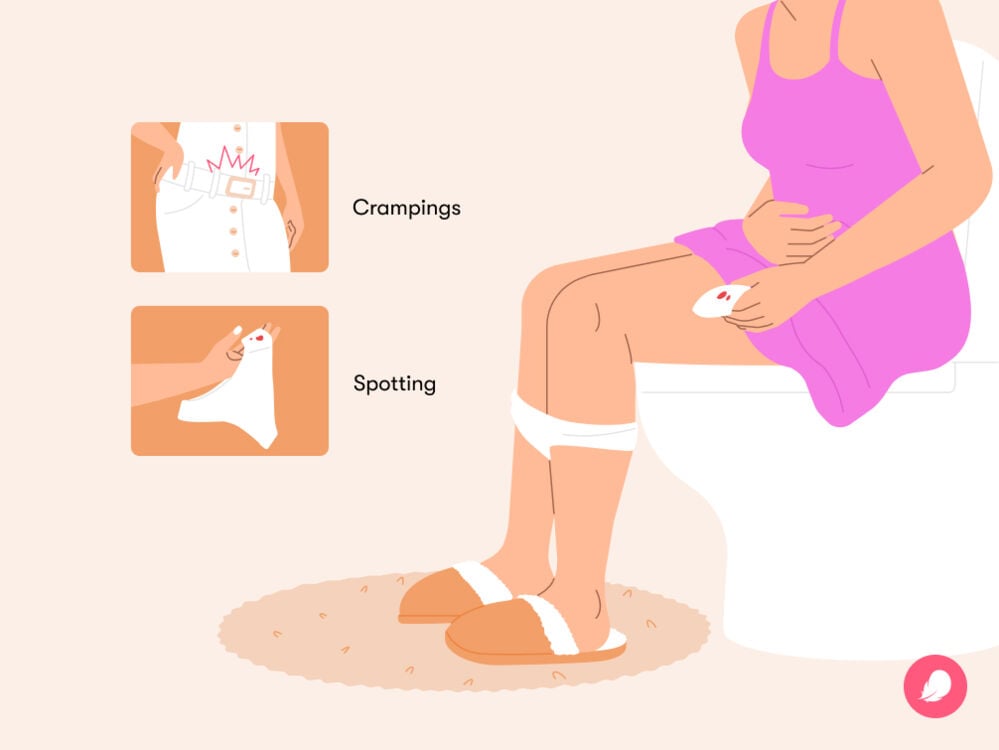
Cramping
Occasionally, some people also report cramping around the time of implantation. It’s not known why implantation cramps happen, but what we do know is you might feel them in your uterus and lower back, similar to mild period pains.
Again, not everyone will experience cramping around the time of implantation, so if you’re trying to conceive and don’t notice this symptom, try not to worry. You can use a cycle-tracking app like Flo to help you better understand your body and what’s typical for you. An implantation calculator may also help you come to grips with what implantation is and when it might happen.
Implantation symptoms: Next steps
If you think you could be pregnant, have noticed implantation symptoms, or have been trying, it can be tempting to rush out to do a test as soon as you think implantation might have happened. Pregnancy is a huge life change, and wanting to know as early as possible is totally natural.
However, it’s really important to wait until the first day of a later period before reaching for a test. While some at-home tests profess to be accurate before this point (and that is possible), pregnancy tests are always more likely to be accurate if they’re taken the day after you expect your period.
If you’re curious as to why this is, it’s due to what the pregnancy test is looking for. After implantation has happened, your embryo starts to produce a hormone called human chorionic gonadotropin (hCG). Pregnancy tests work by checking your pee for traces of hCG.
Your body only starts producing hCG after implantation, and your hCG levels start low but rise significantly through early pregnancy. The reason why it’s important to wait to do a test is the higher your hCG levels are, the easier it is for a test to detect. So you need to give the hCG a chance to build first in order for it to show up on hCG pregnancy tests.
A cycle-tracking app like Flo could give you more information about ovulation, conception, and implantation to help you better understand what’s going on. Similarly, if you’ve noticed some of the symptoms linked to implantation, like spotting and cramping, but are worried about what they are, then don’t hesitate to reach out to your doctor. They’ll be able to walk you through your symptoms and work out the best next step.
More frequently asked questions about implantation symptoms
What does implantation feel like?
Because a fertilized egg is so small at the point of implantation, it’s unlikely you would physically feel it implanting into the lining of your uterus. However, some people do report mild cramps, which, like period pains, are felt in the uterus and lower back.
What is the timing of implantation?
“Implantation occurs between six and 10 days after conception,” says Beckham. So, the exact date of implantation depends on when ovulation occurred and whether conception occurred early or late in your fertile window. It can be really hard to know when that is exactly for you, but you can use an implantation calculator to get a general estimate.


Hey, I'm Anique
I started using Flo app to track my period and ovulation because we wanted to have a baby.


The Flo app helped me learn about my body and spot ovulation signs during our conception journey.


I vividly
remember the day
that we switched
Flo into
Pregnancy Mode — it was
such a special
moment.
Real stories, real results
Learn how the Flo app became an amazing cheerleader for us on our conception journey.
References
“Am I Pregnant?” Cleveland Clinic, my.clevelandclinic.org/health/articles/9709-pregnancy-am-i-pregnant. Accessed 25 Oct. 2024.
“Conception.” Cleveland Clinic, my.clevelandclinic.org/health/articles/11585-conception. Accessed 25 Oct. 2024.
“Fertilization and Implantation.” Mayo Clinic, www.mayoclinic.org/healthy-lifestyle/pregnancy-week-by-week/multimedia/fertilization-and-implantation/img-20008656. Accessed 25 Oct. 2024.
“Home Pregnancy Tests: Can You Trust the Results?” Mayo Clinic, 23 Dec. 2022, www.mayoclinic.org/healthy-lifestyle/getting-pregnant/in-depth/home-pregnancy-tests/art-20047940.
Hong, Kathleen H. “How Many of My Embryos Will Make It to the Blastocyst Stage?” Reproductive Medicine Associates,rmanetwork.com/blog/blastocyst-how-many-embryos-stage/. Accessed 25 Oct. 2024.
“Human Chorionic Gonadotropin.” Cleveland Clinic, my.clevelandclinic.org/health/articles/22489-human-chorionic-gonadotropin. Accessed 25 Oct. 2024.
“Implantation Bleeding.” Cleveland Clinic, my.clevelandclinic.org/health/symptoms/24536-implantation-bleeding. Accessed 25 Oct. 2024.
“Is Implantation Bleeding Common in Early Pregnancy?” Mayo Clinic, 19 Apr. 2022, www.mayoclinic.org/healthy-lifestyle/pregnancy-week-by-week/expert-answers/implantation-bleeding/faq-20058257.
“Irregular Periods.” Cleveland Clinic, my.clevelandclinic.org/health/diseases/14633-abnormal-menstruation-periods. Accessed 25 Oct. 2024.
“Menstrual Cycle.” Cleveland Clinic, my.clevelandclinic.org/health/articles/10132-menstrual-cycle. Accessed 25 Oct. 2024.
“Menstrual Cycle: What’s Normal, What’s Not.” Mayo Clinic, 22 Apr. 2023, www.mayoclinic.org/healthy-lifestyle/womens-health/in-depth/menstrual-cycle/art-20047186.
Nwabuobi, Chinedu, et al. “HCG: Biological Functions and Clinical Applications.” International Journal of Molecular Sciences, vol. 18, no. 10, Sep. 2017, doi:10.3390/ijms18102037.
“Pregnancy Tests.” Cleveland Clinic, my.clevelandclinic.org/health/diagnostics/9703-pregnancy-tests. Accessed 25 Oct. 2024.
“Symptoms of Pregnancy: What Happens First.” Mayo Clinic, 13 Mar. 2024, www.mayoclinic.org/healthy-lifestyle/getting-pregnant/in-depth/symptoms-of-pregnancy/art-20043853.
Thiyagarajan, Dhanalakshmi K., et al. “Physiology, Menstrual Cycle.” StatPearls, StatPearls Publishing, 2024, www.ncbi.nlm.nih.gov/books/NBK500020/.
History of updates
Current version (22 November 2024)
Published (22 November 2024)
In this article
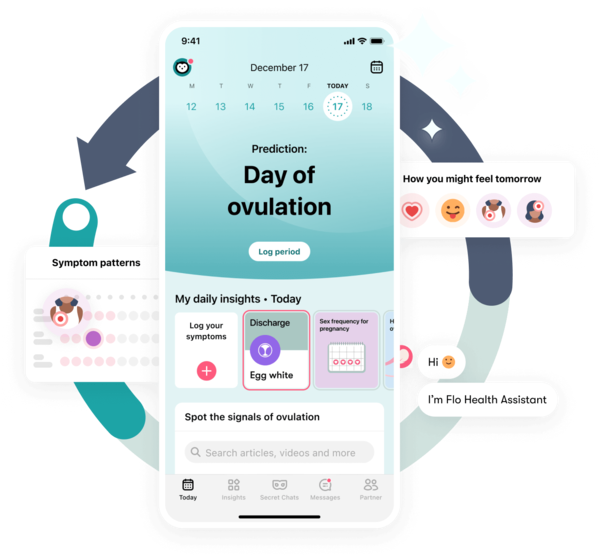
Get your personal guide to fertility
-
Learn how to read your body's ovulation signals
-
Find daily conception tips from our experts
-
Chat with others who are trying to get pregnant




